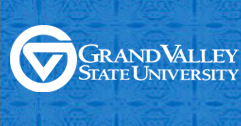Using Service Learning in the Teaching of and Research on Program Evaluation
Location
Hager-Lubbers Exhibition Hall
Description
PURPOSE: This project describes a graduate-level service learning course whereby the instructor divided students into small evaluation teams and assigned the teams one of two distinct models by which to evaluate the same non-profit organization. The goal of the study was to examine how the pedagogy of the class improved student learning. SUBJECTS: 19 students and 21 Stakeholders. METHODS: The teams were assigned either goal-free evaluation or success case method; and they conducted their respective evaluations independently and simultaneously. Each team was responsible for disseminating their findings to the program via a written report in addition to an oral presentation. At the conclusion of the course, the students were administered an attitude survey regarding their service learning experience; and upon reading the evaluation reports, the program’s stakeholders were surveyed regarding the perceived utility of each of the evaluations. MATERIALS: Students completed a 20 item semantic differential regarding their feelings of the service learning aspect of the course. Stakeholders completed a 25-item semantic differential regarding their feelings regarding the student’s evaluation reports. RESULTS: Students reported that they felt the class was very anxiety-provoking as well as disorganized. An open-ended survey question expressed these resulted from having to attend the evaluations outside of class time. Results from stakeholders reported feelings regarding the evaluation reports were dependent on the quality of writing, not the method of evaluation used. CONCLUSIONS: If the project was to be repeated, steps should be taken to reduce anxiety resulting from the out-of class aspect of the project.
Using Service Learning in the Teaching of and Research on Program Evaluation
Hager-Lubbers Exhibition Hall
PURPOSE: This project describes a graduate-level service learning course whereby the instructor divided students into small evaluation teams and assigned the teams one of two distinct models by which to evaluate the same non-profit organization. The goal of the study was to examine how the pedagogy of the class improved student learning. SUBJECTS: 19 students and 21 Stakeholders. METHODS: The teams were assigned either goal-free evaluation or success case method; and they conducted their respective evaluations independently and simultaneously. Each team was responsible for disseminating their findings to the program via a written report in addition to an oral presentation. At the conclusion of the course, the students were administered an attitude survey regarding their service learning experience; and upon reading the evaluation reports, the program’s stakeholders were surveyed regarding the perceived utility of each of the evaluations. MATERIALS: Students completed a 20 item semantic differential regarding their feelings of the service learning aspect of the course. Stakeholders completed a 25-item semantic differential regarding their feelings regarding the student’s evaluation reports. RESULTS: Students reported that they felt the class was very anxiety-provoking as well as disorganized. An open-ended survey question expressed these resulted from having to attend the evaluations outside of class time. Results from stakeholders reported feelings regarding the evaluation reports were dependent on the quality of writing, not the method of evaluation used. CONCLUSIONS: If the project was to be repeated, steps should be taken to reduce anxiety resulting from the out-of class aspect of the project.
